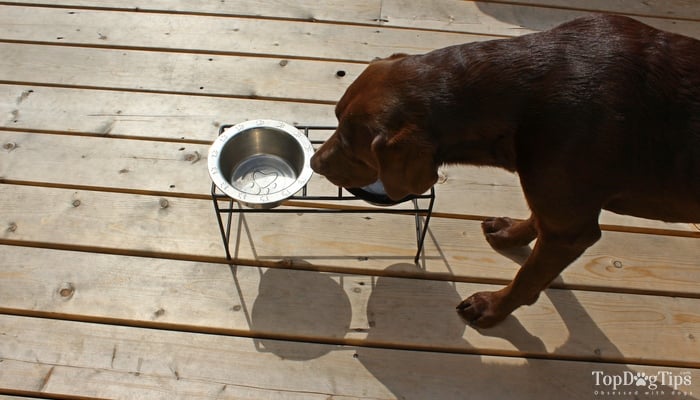Most pet owners just assume that dog bowls are all same. It just depends on your personal preference for their appearance, right? If that's what you've been thinking, you're wrong! It's important to learn how to choose the right dog bowl that will be safe for your canine companion.
There are three things that you need to think about before shopping for a dog bowl:
- size
- aesthetic appearance
- material
Size is easy. How much do you feed your dog at each meal? You just need to ensure that the bowl you choose will be able to hold that amount of food. Plus, there should be a little extra room so Fido doesn't end up spilling his kibble all over the floor.
While aesthetic appearance may be important to you, your dog doesn't care what his bowl looks like. Some owners insist on buying a bowl that will match their home's dècor. If this is an important feature for you, that's fine, but don't let it be the deciding factor in the bowl that you choose to purchase.
Now, let's talk about the feature that this article will focus on – material.
The material of the bowl should be your main focus. Decide on the best material for your pet, and then go from there.When learning how to choose the right dog bowl, the material in which it's made needs to be your first priority.
READ THIS: Dog Food Bowls That Slow Down Eating – When Do You Need One?
How to Choose the Right Dog Bowl
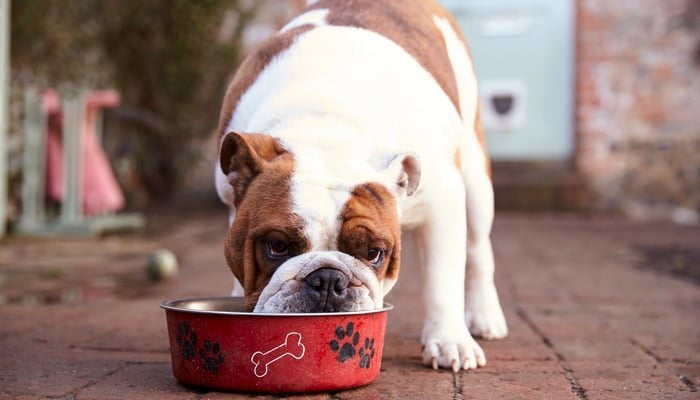 There are three types of material that are most commonly used to make dog bowls. They include:
There are three types of material that are most commonly used to make dog bowls. They include:
- stainless steel
- ceramic
- plastic
As I mention in my video, stainless steel is my recommendation for the best material for dog bowls. I'll tell you more about it in a minute, but for now, let me explain why I'm not a fan of ceramic or plastic bowls.
Ceramic dog bowls
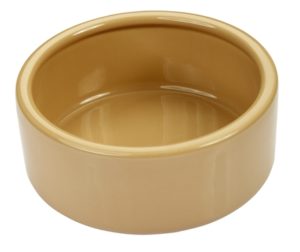 Ceramic dog bowls are easy to clean, and they weigh more than most other bowls. This means they're great for pups that tend to push their bowl around the floor while they eat.
Ceramic dog bowls are easy to clean, and they weigh more than most other bowls. This means they're great for pups that tend to push their bowl around the floor while they eat.
Unfortunately, ceramic bowls are also easily broken. Due to their heavy weight, they can be dropped and will most likely shatter when they hit the floor. Even if they are only cracked, you'll still need to replace them.
Most ceramic dog bowls are coated with a clear sealant that keeps bacteria from getting into the pores and cracks of the material. If the sealant or bowl itself gets cracked, bacteria will begin to grow inside the holes. Even a wash in the dishwasher won't remove it all, and the bacteria can get into your pet's food when he eats.
ALSO READ: 5 Benefits of Elevated Food Bowls for Dogs – Myths or Facts?
Plastic dog bowls
When you're leaning how to choose the right dog bowl, you need to know that plastic dog bowls are the worst choice. Not only can bacteria live in the cracks of plastic bowls just like in ceramic, the material itself may be made of toxic chemicals.
Most pet owners pick plastic bowls because they are the cheapest option, however, you may pay more in the long run for the damage that they do to your dog's health.
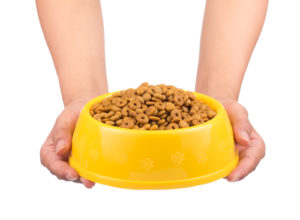 Most plastics are made with harmful chemicals. These chemicals can leech into your pet's food and be transported into his body. While you won't notice your pet getting sick right away, over time these chemicals will build up in your dog's system and could cause serious illnesses.
Most plastics are made with harmful chemicals. These chemicals can leech into your pet's food and be transported into his body. While you won't notice your pet getting sick right away, over time these chemicals will build up in your dog's system and could cause serious illnesses.
Bisephenol A, better known as BPA, is one of the most dangerous chemicals found in plastics.
Researchers have only just begun to study the harmful effects of this toxin, so we have a lot more to learn. It's best to stay away from plastic bowls in general, but if you must buy one, ensure that it is BPA free.
Stainless steel dog bowls
As I've already stated, my recommendation is always a stainless steel bowl. They're safe, easy to clean and lightweight. They're the most common heated dog bowls for winter, too. Not to mention, stainless steel is much more durable than ceramic or plastic.
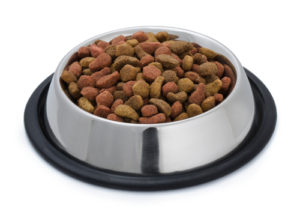 Dogs that like to chew would easily ruin a plastic bowl and could crack a ceramic bowl if they decided to gnaw on it. Stainless steel is ideal for pups that like to chew, it can be used with any type of diet and it's 100% safe for all dogs.
Dogs that like to chew would easily ruin a plastic bowl and could crack a ceramic bowl if they decided to gnaw on it. Stainless steel is ideal for pups that like to chew, it can be used with any type of diet and it's 100% safe for all dogs.
In short, when discussing how to choose the right dog bowl, I recommend stainless steel as the best bowl for any pet and any diet. It is safe to use in any feeding situation.
If you decide to go with a stainless bowl, there are some features that you may want to look for. Most stainless bowls have a rubber ring around the bottom to prevent slipping. You should also look for one that has a small lip around the edge to reduce the mess your Fido may make.
RELATED: Mealtime Battle – Regular Dog Bowl vs. Raised Dog Bowl
Find the dog food and water bowl that meets your dog's needs
Of course, you have to think about your dog in this situation as well. As I explain in my video, learning how to choose the right dog bowl also involves catering to your pup's needs at mealtime.
Is your dog a gulper? Does he inhale his food so quickly that he sometimes chokes on it? This is actually very dangerous, because your dog is not chewing his food properly. Not only can it lead to an obstruction of his airway, it can also wreak havoc on his digestive system.
In order to slow him down, you can buy a dog bowl that is built to make him eat slower. These bowls, known as slow feeders, come in many different designs. As you can see, the one that I have has small holes in the side and the dog has to work the bowl around with his nose to spill kibble out the holes.
A raised feeder or elevated dog food/water bowls may also be necessary for your pet if he has joint discomfort, arthritis or back problems. These are just what they sound like, a type of platform that raises your dog's bowl off the floor so he doesn't need to bend down as far to access his dinner.
READ NEXT: Top 5 Best Cheap Dog Food Bowls


